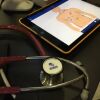By Dan White
Pulse oximetry is a common tool used by EMTs and paramedics to measure a patient’s blood oxygen saturation. Pulse oximetry devices range from small, self-contained fingertip units that attach to the patient’s finger to larger handheld units and devices integrated into cardiac monitors.
In the early 90s, the first EMS pulse oximeters were the size of a lunchbox. Today, they come as small as a finger sensor. They have also become much less expensive. Early prehospital oximeters cost over a thousand dollars while today a good one is much less. Just like consumer electronics have become smaller and less expensive, so too have medical electronic devices like pulse oximeters.
When shopping for a new pulse oximeter, here are six important issues to consider:
1. Pulse oximeter durability
First and foremost, you need a pulse oximeter that will hold up to the rigors of street use. The type of products we have the most problems in the field are the electronics. We use them in extremes of hot and cold, and subject them to high humidity with occasional hard drops. What works in the clinic setting does not necessarily work well for EMS. I’ve found it’s best to stick with reputable brand names you know, with a long history of selling devices to EMS. These are the firms that have already seen what you can do to a medical device. They have already engineered in the robustness required for a product used by medics.
I knew an operations manager once in a large midwestern city who boasted, “You can put any of my guys in a locked room for one hour with two steel balls. When you get back, you will find they have broken one and lost the other.”
These are the people we are proud to call our colleagues. They are hard on equipment. I suggest you ask questions about durability first, when selecting a new oximeter.
2. Battery type and life
Carefully compare the battery life of the different models you are considering. Look for one that uses a type of battery you already have in stock. Most departments already have plenty of spare AA and C batteries. One of the more annoying things for a supply officer is another piece of equipment with its own special battery.
If the battery is rechargeable, make sure to understand the recharging requirements and if it can be charged in the ambulance or needs to be plugged into a charging station at the base.
3. Compare environmental specs
Look carefully at the manufacturer’s specification sheet. Somewhere it will detail the operating range. This is a major area of consideration if your department is subject to environmental extremes.
4. Compare accessory costs
Look for a large range of brand names and ideally the availability of aftermarket sensors. The big sensor companies will not make a generic sensor for a device that does not have a substantial installed base. Disposable sensors can be the largest ongoing cost of having a pulse oximeter.
5. Consider a combination device
Many departments have replaced older stand-alone handheld pulse oximeters with devices that combine pulse oximetry with other functions. For some time now, we have had available handheld devices that can perform both pulse oximetry and capnography. Many of the cardiac monitors include oximetry as an available option. Newer non-invasive multi-parameter monitors now routinely come with pulse oximetry. These are all viable options, but some departments still prefer a separate pulse oximeter.
There are two main reasons to keep it separate. One is that when everything is combined together, one failure results in complete failure. In other words, if one thing goes down for repair, so too do your other clinical diagnostics. The other reason is that a separate device tends to be more easily deployed at the patient’s side. It makes the device available earlier in the process if it fits conveniently in your jump bag.
6. Don’t buy old SpO2 technology
As the number of imported pulse oximeters skyrockets, many new brands and models are appearing almost daily. Some are astonishingly cheap. It’s a real temptation to buy the least expensive one you can find. This is a recipe for problems later as many have learned the hard way. The good news about all the new competition is that it appears to be driving prices down on premium quality equipment.
The major medical equipment manufacturers are responding with new budget-priced models. Honestly, some of these companies don’ know HOW to make a poor-quality product. They may limit features or in some way price-position these new models carefully. But the end result will be very good equipment at even lower prices.
Pulse oximeters today are more reliable and accurate than ever before. They have gotten a lot smaller and less expensive, too. I recommend you pay a little extra for a more durable and long-wearing device. The rewards are usually fewer problems and less equipment downtime, with greater staff satisfaction.
Any other suggestions? Anything we missed in the list above? Email editor@ems1.com with your feedback.
This article, originally published on November 02, 2009, has been checked to verify the information and updated with refreshed content and resources.














